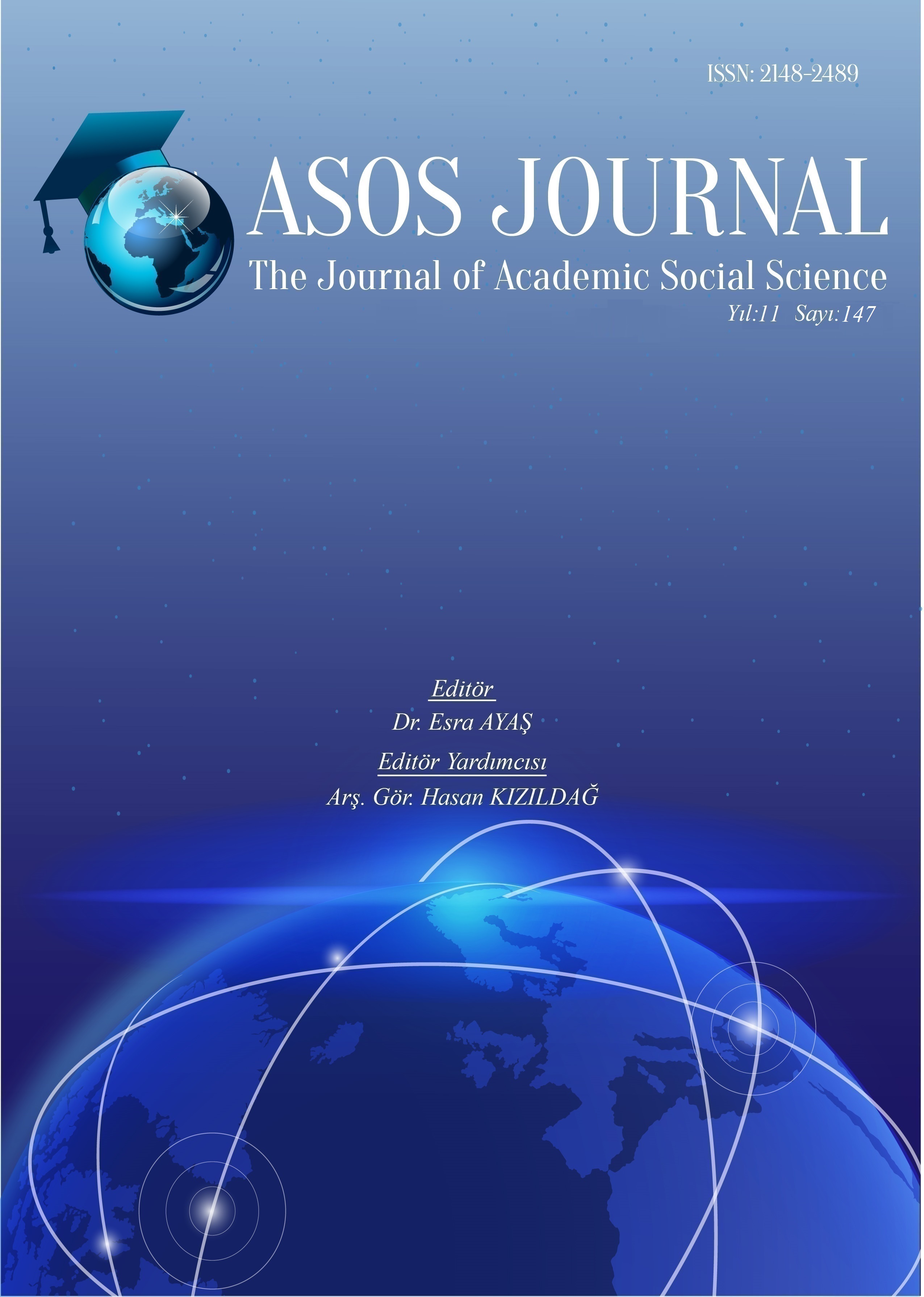ÖĞRENME GÜÇLÜĞÜ OLAN VE OLMAYAN İLKOKUL ÖĞRENCİLERİNİN OKUMA BECERİLERİ İLE İYİ OLUŞ DÜZEYLERİ ARASINDAKİ İLİŞKİNİN İNCELENMESİ
Author :
Abstract
Bu çalışmanın amacı, öğrenme güçlüğü olan ve olmayan 3. ve 4. sınıf öğrencilerinin okuma becerileriyle iyi oluş düzeyleri arasındaki ilişkiyi incelemektir. Araştırmada tarama modeli kullanılmıştır. Araştırma, öğrenme güçlüğü olan endişe düzeyinde 34, öğrenme güçlüğü olmayan öğretim düzeyinde 62 ve öğrenme güçlüğü olmayan serbest düzeyde 54 olmak üzere toplam 150 öğrencinin katılımıyla gerçekleştirilmiştir. Araştırmada veri toplama aracı olarak Liddle ve Carter (2015) tarafından geliştirilen ve Akın vd. (2016) tarafından Türkçeye uyarlanan “Stirling Çocuklar İçin Duygusal ve Psikolojik İyi Oluş Ölçeği”, Akyol (2016, s. 98) tarafından Türkçeye uyarlanan Haris ve Sipay (1990), Ekwall ve Shanker (1988) ve May’a (1986) ait “Yanlış Analiz Envanteri” ile araştırmacılar tarafından oluşturulan "Kişisel Bilgi Formu" kullanılmıştır. Çalışma grubunun aldığı iyi oluş puanlarının normal dağılıma uygunluğunu belirlemek amacıyla Skewness ve Kurtisos (Çarpıklık ve Basıklık) değerlerine bakılmıştır. Yapılan analizler sonucunda değerler verilerin normal dağılım gösterdiğini belirtmiştir. Bu nedenle “sınıf düzeyi” ve “cinsiyet” değişkenlerinde parametrik testlerden T- testi, “sosyoekonomik düzey” değişkeninde ise ANOVA ve T-testi kullanılmıştır. Araştırma sonucunda; okuma düzeyi ile iyi oluş düzeyi arasında yüksek düzeyde, pozitif ve anlamlı bir ilişki olduğu ve okuma düzeyinin iyi oluş düzeyinin anlamlı bir yordayıcısı olduğu sonucuna ulaşılmıştır. Öğretim ve serbest düzeyde yer alan öğrencilerin iyi oluş düzeyleri sınıf düzeyine göre farklılaşmazken endişe düzeyinde yer alan öğrencilerin sınıf düzeyi yükseldikçe iyi oluş düzeylerinin düştüğü görülmüştür. Bunun yanında iyi oluş düzeyi endişe ve öğretim düzeyinde cinsiyete göre değişmezken serbest düzeyde kızlar lehine anlamlı bir farklılık göstermiştir. Araştırmada öğrencilerin tüm okuma düzeylerinde sosyoekonomik düzeyleri yükseldikçe iyi oluş düzeylerinin de yükseldiği gözlemlenmiştir. Araştırma sonucunda elde edilen bulgular alanyazın çerçevesinde tartışılmış ve önerilerde bulunulmuştur.
Keywords
Abstract
The purpose of this study is to examine the relationship between reading skills and well-being levels of 3rd and 4th grade students with and without learning disabilities. Survey model was used in the research. The research was conducted with the participation of a total of 150 students: 34 at the anxiety level with learning disabilities, 62 at the instructional level without learning disabilities, and 54 at the free level without learning disabilities. The data collection tool in the study was developed by Liddle ve Carter (2015) and used by Akın et al. "Stirling Emotional and Psychological Well-Being Scale for Children" adapted into Turkish by Akyol (2016, p. 98), Haris ve Sipay (1990), Ekwall ve Shanker (1988) and May (1986) adapted into Turkish by Akyol (2016, p. 98). The "False Analysis Inventory" and the "Personal Information Form" created by the researchers were used. Skewness and Kurtisos values were examined to determine the suitability of the well-being scores of the study group to normal distribution. As a result of the analysis, the values indicated that the data showed a normal distribution. For this reason, T-test, one of the parametric tests, was used for the "class level" and "gender" variables, and ANOVA and T-test were used for the "socioeconomic level" variable. As a result of the research; It was concluded that there is a high, positive and significant relationship between reading level and well-being level and that reading level is a significant predictor of well-being level. While the well-being levels of students at the instructional and free level did not differ according to grade level, it was observed that the well-being levels of students at the anxiety level decreased as the grade level increased. In addition, while the level of well-being did not change according to gender at the level of anxiety and education, it showed a significant difference in favor of girls at the free level. In the study, it was observed that as the socioeconomic levels of students increased at all reading levels, their well-being levels also increased. The findings obtained as a result of the research were discussed within the framework of the literature and suggestions were made.





